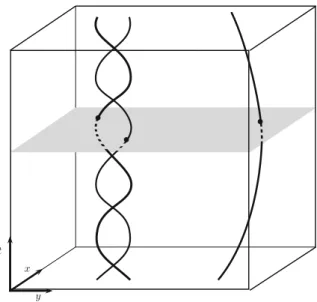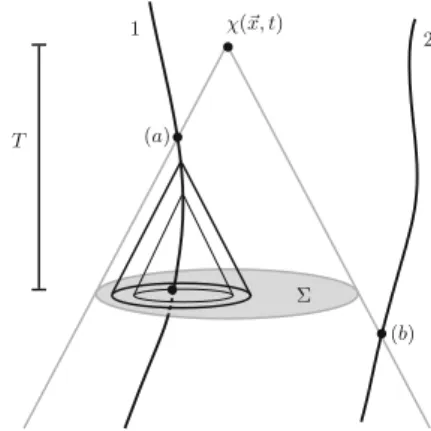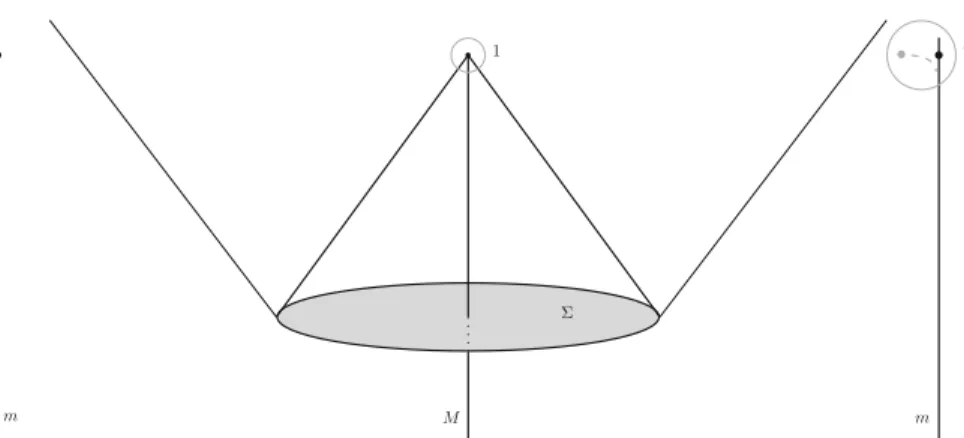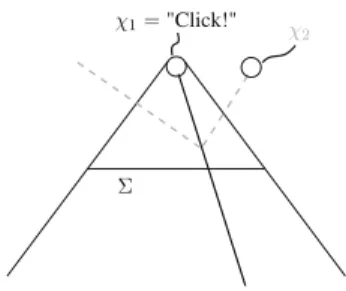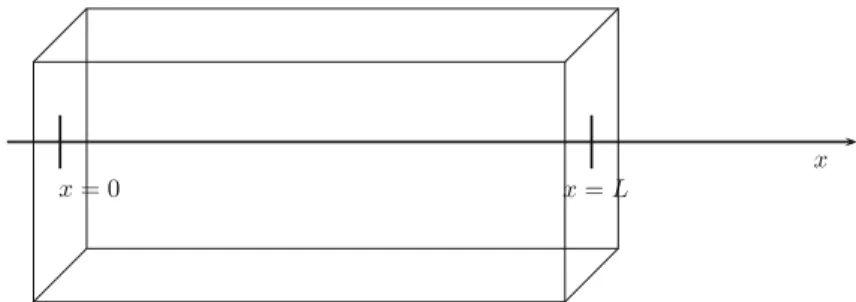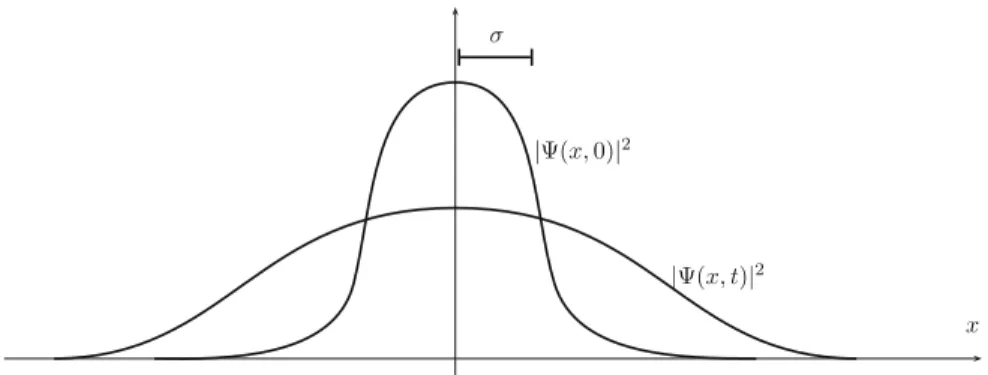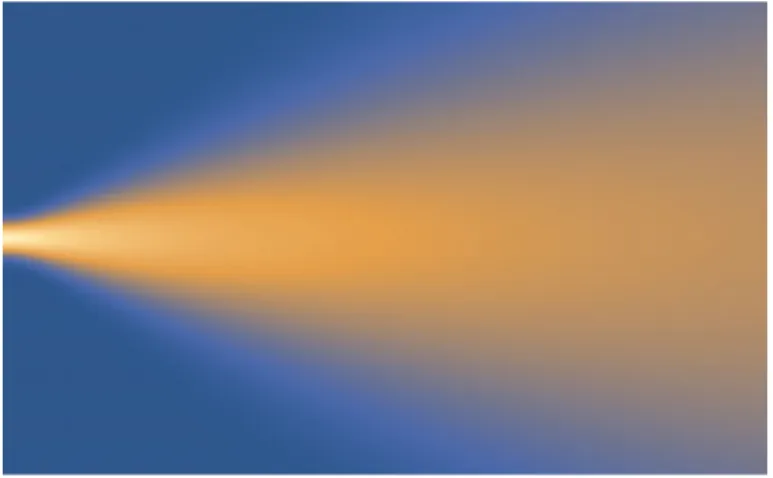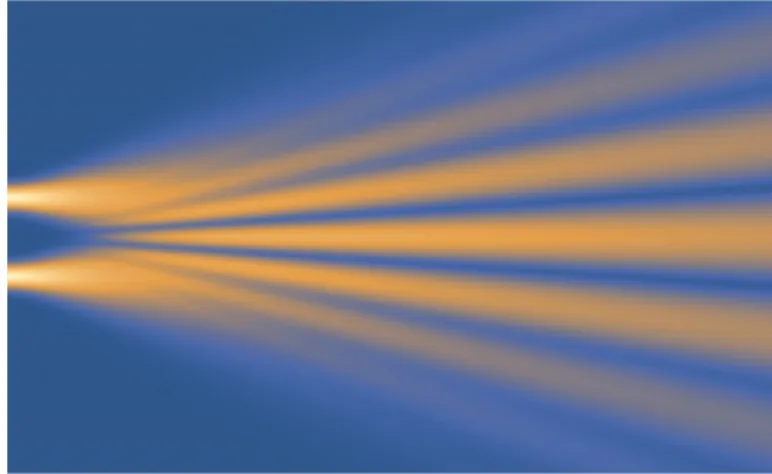However, students found some of the material in the two introductory chapters quite fresh and challenging. However, I try, even in the ten chapters of the book, to build bridges to the primary literature.
Newtonian Mechanics
One sees the orbits of the two "stars" in the "binary star system" (about their mutual center of mass) as two spiral world lines, with the world line for (much lighter). To make this concrete, imagine a slice tilted through the same point on the world line of the "planet" that the slice in the picture passes through.
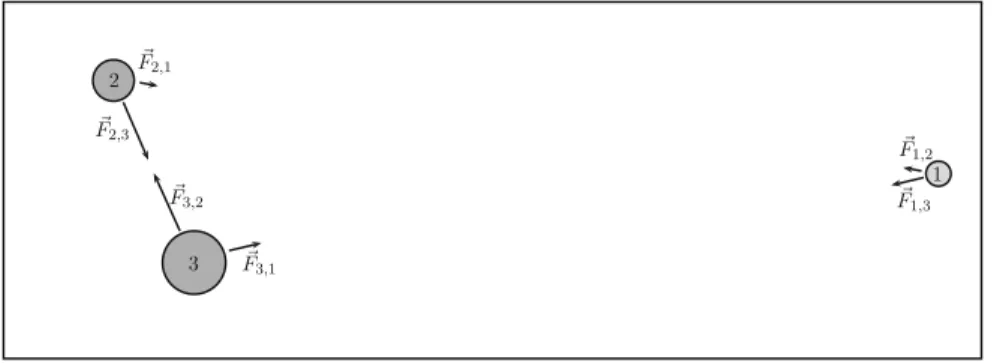
Maxwellian Electrodynamics
It will be helpful to remind ourselves of Maxwell's equations, which can be understood to tell us how electric and magnetic fields change in response to charged particles (and each other). Together, as we have said, Maxwell's equations tell us how electric and magnetic fields react to (themselves, each other, and) charged particles.
Locality
To complete the formulation of the theory, we also need to know how the charged particles react to the fields. But this part of the general solution is simple, because the corresponding homogeneous problem is just the ordinary wave equation whose solutions are electromagnetic waves propagating at the speed of light.
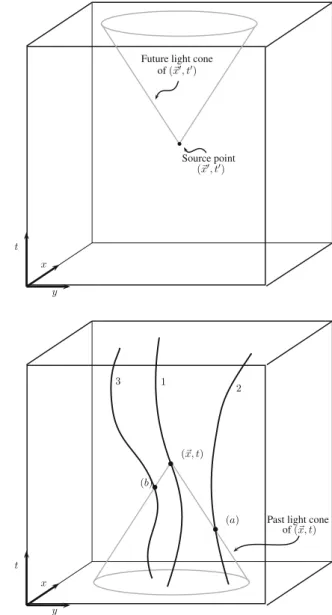
Bell ’ s Formulation of “ Locality ”
This is the same idea as before, but right now we're talking about the probability of a particular event, rather than the event itself, since we don't want to assume that everything that happens is uniquely determined by events in the light cone of the past. 16 1 Prequantum theories It is important that [] completely shields from 1 the overlap of the backward light cones of 1 and 2.
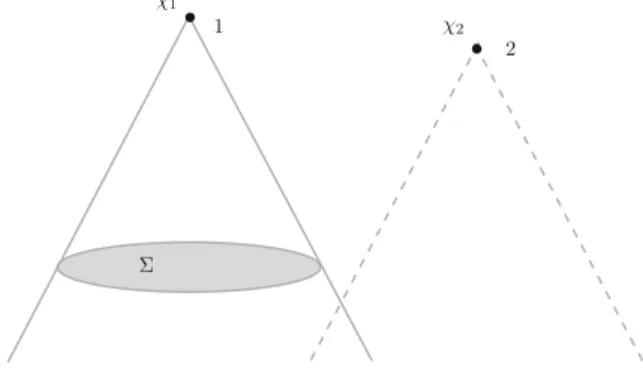
Ontology
Similarly, if we write the electric field in terms of the scalar and vector potentials as But here is another perfectly valid choice of gauges, the so-called "Coulomb gauge", in which.
Measurement
A charged particle (whose final position allows us to determine its acceleration and thus the field that caused that acceleration) acts as a pointer to measure the electric field discussed earlier. In general, each measurement must cause a certain effect on the configuration of some directly observable macroscopic object, from which the final configuration of the measurement result is "selected".
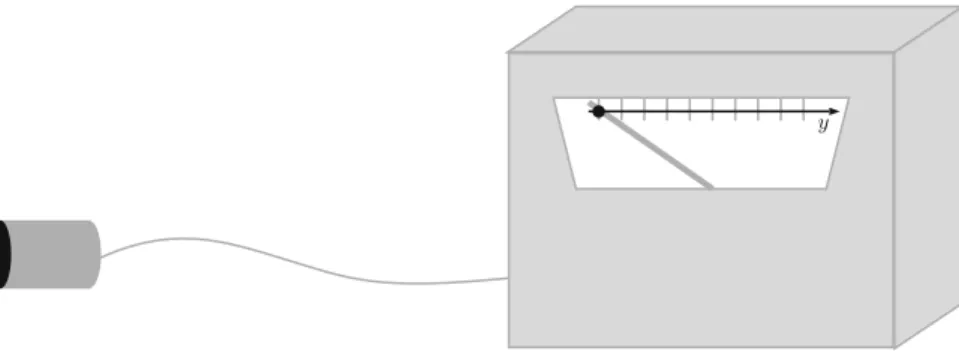
Abstract Spaces
Will the total angular momentum of the two-star system be conserved (assuming no external force). Now draw the "trajectory" of the dihedral system through the two-dimensional configuration space.
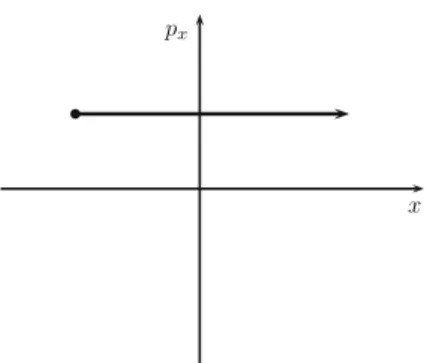
Overview
If a property of the particle other than its position is measured (for example, its momentum or energy), we will use the "generalized Born rule". Note that the original Born rule (for position measurements) can be understood as a special case of the “generalized Born rule” if we take Aˆ to be the position operator.
Particle-in-a-Box
If we can find a way to write the given initial wavefunction as a linear combination of these "energy eigenstates", as in. Here we do not need to do any work to write the initial wave function as a linear combination of energy eigenstates.
Free Particle Gaussian Wave Packets
OK, so, first step: write the initial state as a linear combination of the energy eigenstates. So the uncertainty in the position of the particle grows and grows as time evolves.

Diffraction and Interference
But if we move slightly sideways (say in the positive x-direction), we move towards the central vertex of one of the. A classic interference pattern appears in the wave intensity downstream of the "double Gaussian slit" barrier at the left edge of the image.
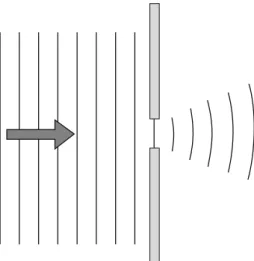
Spin
Consider the spin-up and spin-down states here, ψ+sandψ−z, as the energy eigenstates for the particle-in-a-box potential. To answer this we must, as always, write the given state as a linear combination of operator eigenstates corresponding to the measurement to be performed.
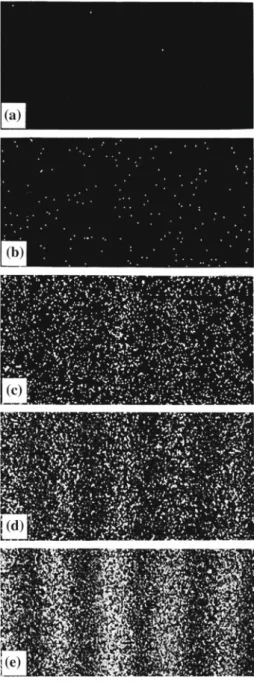
Several Particles
Starting with the Schrödinger equation in two dimensions, . and look for solutions of the form For the "two particles in a box" system, construct an entangled state in which even the total energy of the two particles is not well defined.
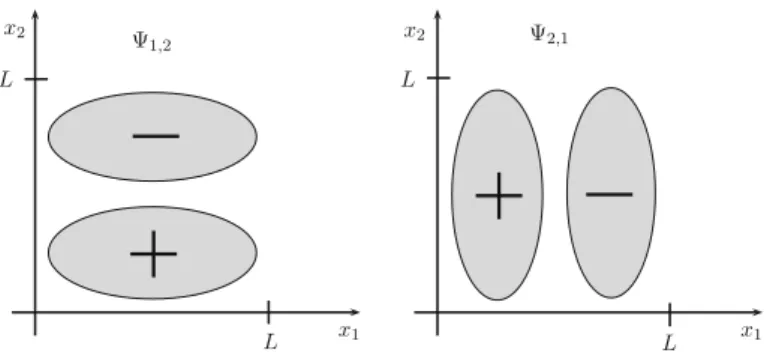
The Quantum Description of Measurement
We have already pointed out that the "collapse" that occurs with the particle-in-the-box wavefunction is not (or at least not clearly, not apparently) something that is described by Schrödinger's equation. For example, we do not speak of “the wave function of the pointer”, but rather the position of the pointer.

Formal Treatment
First, it will include the usual expressions corresponding to the kinetic and potential energies of the particle-in-the-box whose degree of freedom is "x":. The third (and here most important) contribution to the Hamiltonian will be that which describes the interaction between the particle and the pointer.
Schr ö dinger ’ s Cat and Einstein ’ s Bomb
In particular, this is not a condition where there is any certain fact as to whether the cat is dead or alive. At a fixed time, parts of the ψ function correspond to the cat being alive and other parts to the cat being pulverized.
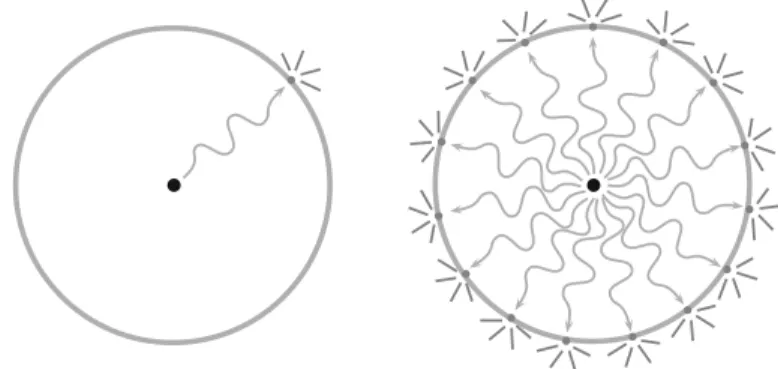
Hidden Variables and the Ignorance Interpretation
So for example when we measure the energy of the particle-in-the-box and its wave function collapses fromψ0 =c1ψ1+c2ψ2+c3ψ3. Within the framework of statistical quantum theory, there is no such thing as a complete description of the individual system.
Wrap-Up
And then, finally, "the measurement problem" also sometimes refers to the theory's apparent inability to provide meaningful results when modified in the obvious way in response to the criticisms of the previous paragraphs. Work out some quantitative estimates of the length of time involved in these types of cases.
Einstein ’ s Boxes
The dashed (ψL) and dashed (ψR) curves represent the parts of the particle's quantum mechanical wave function (ψ=ψL+ψR) contained in the separated half-boxes. However, now consider event B – examining the contents of the right half box.
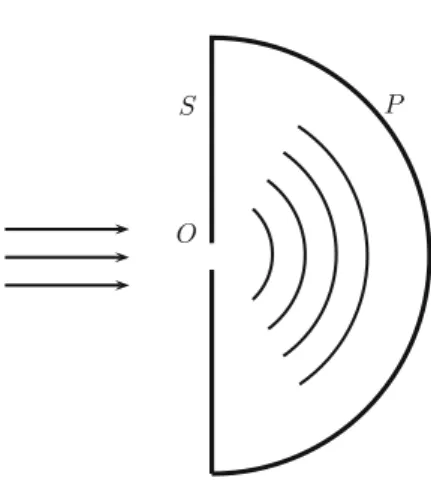
EPR
Now in this situation presents another method to determine the condition of the glass in the box: You just have to open the cabinet and see what glass is there. So that wave function gives at best a decidedly – a doubly – incomplete description of the state of the particle.
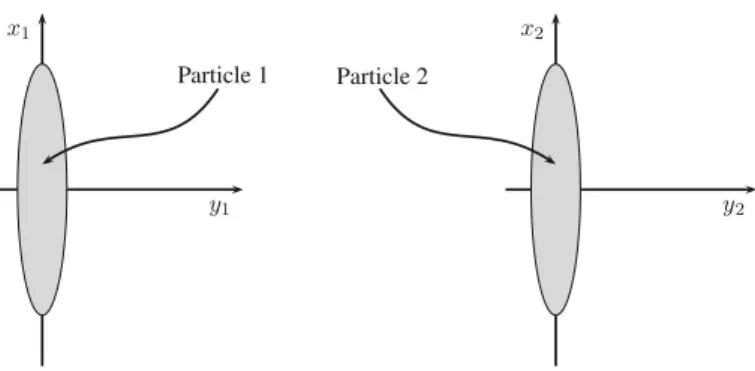
Einstein ’ s Discussions of EPR
Starting from this conception, he will (or, at least, can) state: the function ψ is an exhaustive description of the real situation of the system. Now it seems to me that we can talk about the real factual state of the partial system S2.
Bohm ’ s Reformulation
When the atoms separated, each atom would continue to have each component of its spin-momentum opposite that of the other. Now suppose one measures the spin angular momentum of any of the particles, say no.
Bell ’ s Re-Telling
It is in the context of ideas like these that one must imagine the discussion of Einstein-. Now suppose that the spin of one of the particles (e.g. particle 1) is measured along the z direction and the spin of the other particle (2) is measured along the direction ˆ (in the x−z plane and gives an angle θ in relation to to the z-axis).
Complexity and Reality
A more direct and literal description of the state of the particle (in terms of constitutive rather than dispositional properties, you might say) would simply say instead: its wave function has a certain spatial structure, namely that of ψn(x). But in principle the idea is simple: the position X(t) of the particle-in-the-box evolves accordingly.
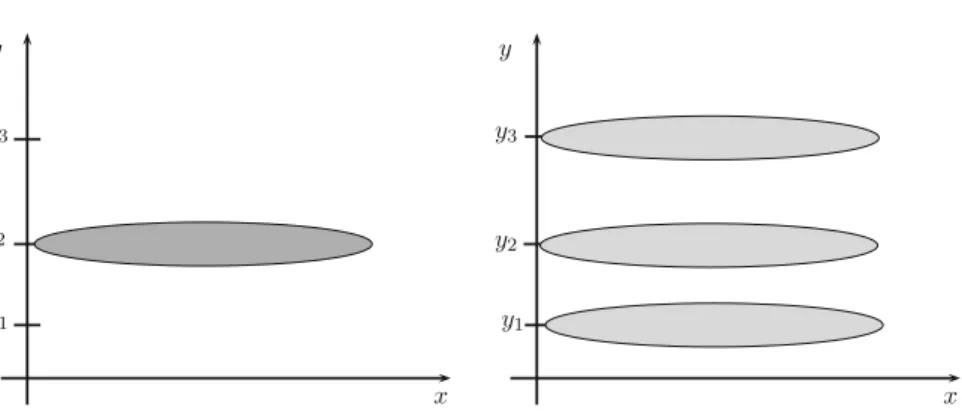
Con fi guration Space
Ontology, Measurement, and Locality
Again one wants to say intuitively: it is the complete quantum mechanical description of the state of particle 1, i.e. the wavefunction of particle 1. It should be clear that if the quantum mechanical state of the two particles is given jointly by Eq. 5.21), it is impossible to assign a single-particle wavefunction to each individual particle.
Schr ö dinger ’ s Suggestion for a Density in 3-Space
Now, for example, a particle confined to the (half-) box on the left may have a wave function. For example, if we prepare a large ensemble of particle pairs in state A and then measure their positions, we will always find particle 1 on the left and particle 2 on the right.

So Then What?
According to Schrödinger's early proposal about the physical meaning of the wave function, Eq. 5.25), what is the charge densityρ1(x) associated with particle 1. What, in terms of the problem raised in this chapter, is not quite right about this argument.
Bohr ’ s Como Lecture
This situation seems to clearly indicate the impossibility of a causal space-time description of the light phenomena. The problem of the nature of the constituents of matter presents us with an analogous situation.
Heisenberg
Only then does the probability function allow us to calculate the probable result of the new measurement. This example clearly shows that the concept of the probability function does not allow a description of what happens between two observations.
Bohr on Einstein ’ s Diffraction Example
In the frame of reference [in the figure], the velocity of the membrane can be neglected and only a change of momentum between the particle and the membrane needs to be considered. But then, according to the uncertainty principle, the spatial location of the diaphragm (and thus of the particle) would become completely undefined.
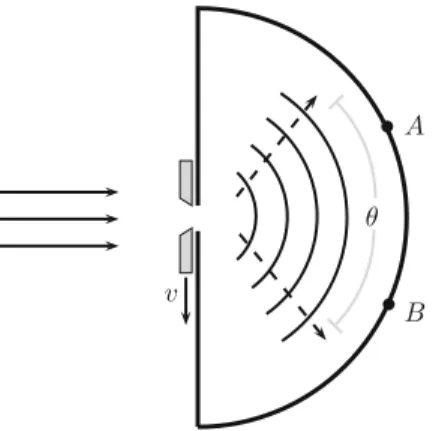
The Photon Box Thought Experiment
The box hangs on a spring, so you can read the weight of the box from the scale on the left. This means, based on the standard energy-time uncertainty formula, that the photon energy will be "soft" by an amount E ≥h/t.
![Fig. 6.3 Einstein’s photon box setup as discussed by Bohr in Ref. [6]. An alarm clock inside the box triggers, at a pre-determined time as registered by the clock, a mechanical apparatus which briefly opens a shutter, allowing a single photon to escape to](https://thumb-ap.123doks.com/thumbv2/1libvncom/9119059.0/171.659.134.518.80.476/einstein-discussed-triggers-determined-registered-mechanical-apparatus-allowing.webp)
Bohr ’ s Reply to EPR
In such a case, there is of course no question of a mechanical failure of the system under investigation during the last critical phase of the measurement procedure. But even at this stage, there is essentially an influence on the very conditions that determine the possible kinds of predictions regarding the future behavior of the system.
Contemporary Perspectives
Suppose I measure the particle's position, and I find it to be at [a certain point]. Of the founding fathers, only Einstein thought that De Broglie was on the right track.
Overview
So exactly where do we need to evaluate the function to give the velocity of the particle. But it is now easy to see that this is yet another way of rewriting the equation that we guessed above for the particle's velocity in the pilot wave theory: since.
Particle in a Box
But then one can see that P(x,t)= |(x,t)|2 is a special equilibrium probability distribution for the pilot wave theory in the following sense:. You can see in the figure that the distribution then becomes very erratic (with several lanes close together) after a short time.
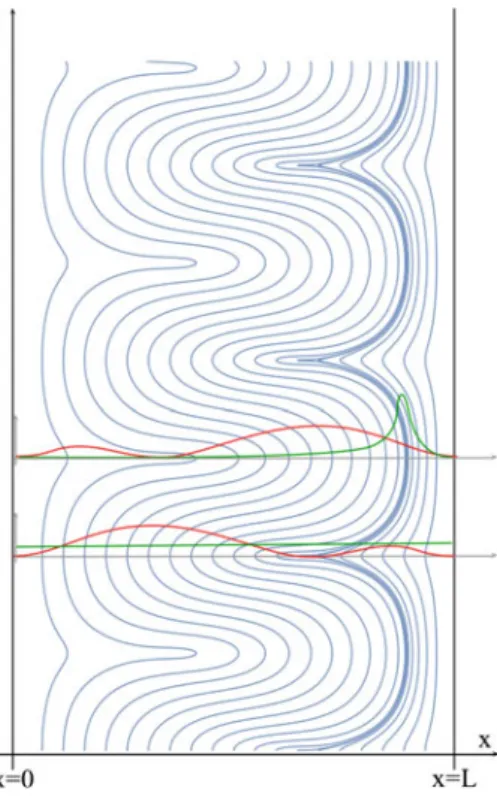
Other Single Particle Examples
To recapitulate this first example, when initially narrow wave packets expand, which of course happens in a phenomenon called diffraction, for example, according to pilot wave theory, the possible particle trajectories also expand from one another, as would be expected from the equivariance property . This type of image of particle trajectories for a double-slit experiment according to pilot wave theory was first presented in Ref.
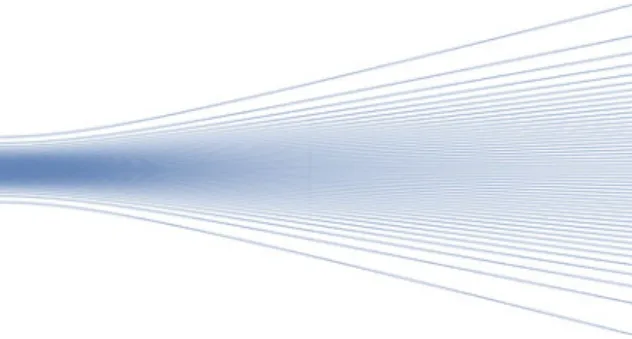
Measurement
But the crucial idea is that, according to pilot wave theory, the wave function alone does not fully describe the physical situation. In addition, there is the current position X(t) of the PIB and – crucially here – the current position Y(t) of the pointer.
Contextuality
The Many-Particle Theory and Nonlocality
Reactions
EPRB Revisited
A Preliminary Bell Inequality
The Real Bell (and the CHSH) Inequality
Experiments
What Does It Mean?
Ghirardi, Rimini, and Weber
Multiple Particle Systems and Measurement
Ontology, Locality, and Relativity
Empirical Tests of GRW
The Basic Idea
Probability
Ontology
Locality
